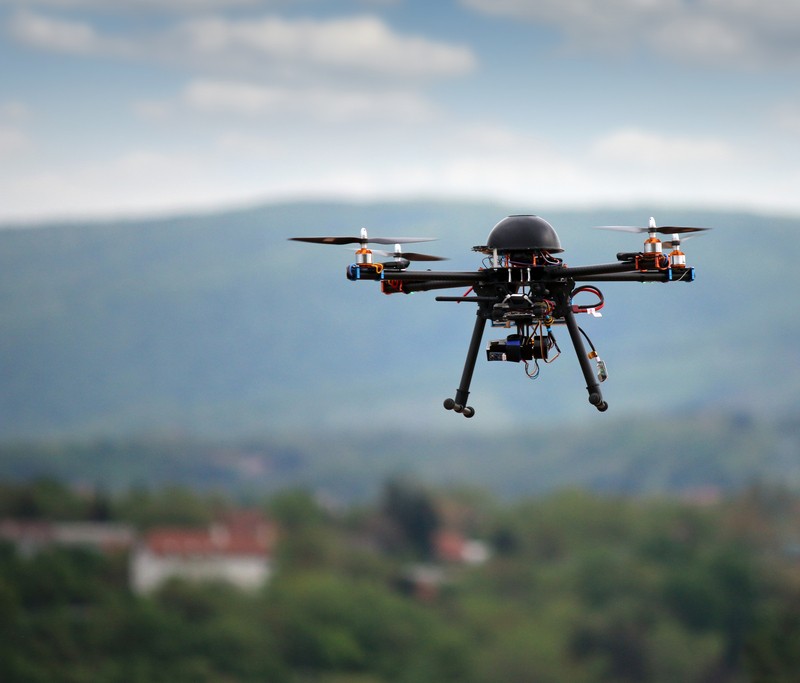Drones are a fantastic invention, but like many fantastic inventions, there are individuals looking to abuse this technology at the expense of others' security. One way you can learn how vulnerable an open Wi-Fi system is (a common way drones are piloted) is to construct a system to counteract drones in your area. Learn how below.
Quadcopters capable of transmitting high-quality video are making it possible to affordably record unique perspectives. But these “unmanned aircraft systems,” as the FAA calls them, have posed new challenges in security, safety, and privacy.
As a result, a cottage industry is forming for anti-drone technology. These devices come in a range of sizes, from plane-mounted to handheld tools. I will show you how to build our own rig to execute a particular network-based attack against one type of quadcopter control: Wi-Fi.
A WORD OF CAUTION
While I won’t touch on signal jamming or directed energy, it’s worth noting that jamming creates serious safety risks and is illegal. Additionally, the computer-based techniques that we’ll cover should only be done on networks and devices that you own, or have permission to experiment on.
OUR TEST
Using a laptop computer, USB Wi-Fi card, and our new antenna, we’ll explore a very simple attack. Power on the AR.Drone 2.0 and have a friend fly it around using the app. After a few seconds, its access point should also show up in your available wireless networks. Connect to the network and start up your favorite terminal application. The default gateway address for this network will have an address of 192.168.1.1. You’ll be able to telnet to this address since the service is, unfortunately, left wide open on this system.
Now we’ll look at how you might automate this attack with a Raspberry Pi, a touchscreen, and a couple of Bash scripts.
I used a great tutorial provided by Adafruit (learn.adafruit.com/adafruit-pitft-28-inch-resistive-touchscreen-display-raspberry-pi) to set up my Raspberry Pi with a touchscreen, so that I could launch my attacks with a click. Assuming that you have a Pi already set up, let’s walk through how you could automate this.
The first step is to log into your Pi using SSH.
Change directory to the Pi’s desktop (or wherever you want) so that the scripts are easy to find and click.
Using your favorite text editor, create a new file. I named this join_network.sh because I’ll be using this to make the Pi automatically join the AR.Drone 2.0 access point.
Add these 8 lines to your script. On line 7, enter the full name of the AR.Drone 2.0 access point. Once you’re done, save everything.
You’re now going to automate the connection that you tested before and send an additional command to shut the drone down. Start by creating another script. I called mine poweroff.sh.
Add these lines to your script. This initiates a telnet connection to the drone, which is located at 192.168.1.1, and sends the command of poweroff, which tells the drone (which is a computer after all) to shut everything down.
Now make sure that the scripts are executable. Do this by typing sudo chmod u+x filename. Check this for both of the files; we can verify that they are now executable by typing ls -la and looking for the read, write, execute permissions rwx associated with the file.
The two scripts are ready to use. Be sure that no people or fragile items are below the drone when you’re testing. Have fun!
There's no half-assing this project; this is a difficult build for most people, especially those of us who are not already technologically inclined. However, it's important not to ignore this area of expertise because we can be sure that the world's technology will only get more and more advanced. If we don't keep on top of how to combat these individual threats, then we will only be weaker because of it. Then again, I'm sure a few well-placed shots would bring a drone down just as quickly.
If we don't keep on top of how to combat these individual threats, then we will only be weaker because of it. Then again, I'm sure a few well-placed shots would bring a drone down just as quickly.
This is a fun project for anyone who likes to tinker with technology. For more information about this build, visit Make.

Jordan Patrick
Ohhhhh, you mean a gun. My high powered pellet gun does quite well.
Nick Yanity dunno if your interested in this
Camping in the backyard tonight so we’ll see.
Toy drones may use wi-fi for control but that is it. Some basic systems using cameras such as a Go Pro may use wifi to receive video signals but any serious system is going to use something with more range.
I have a great drone Disabler, it’s called a shotgun! C’mon, fly it over my house and see!
They now offer a net you can take the drone down with. It is against the law to shoot them down.
Unfortunate if one is cleaning their gun and it accidentally discharges taking out a spy drone 😉